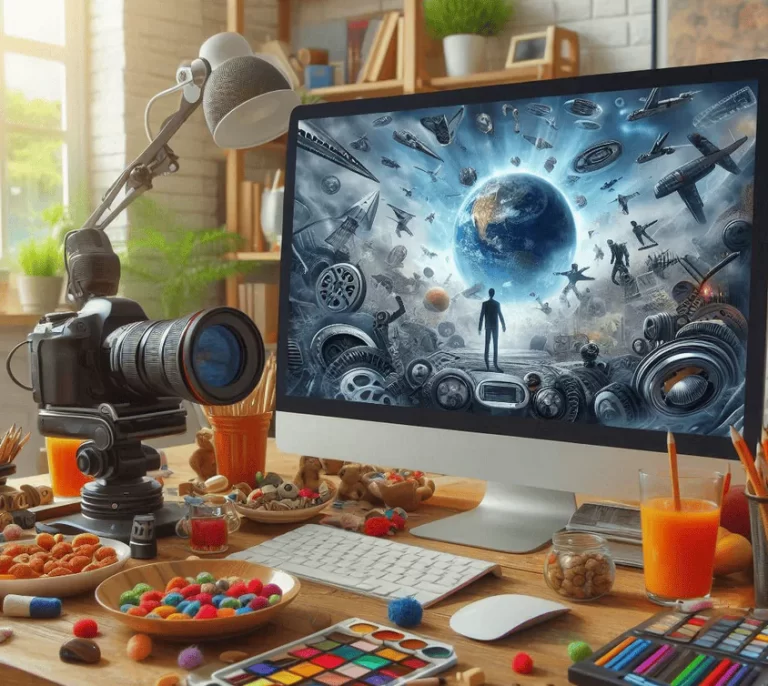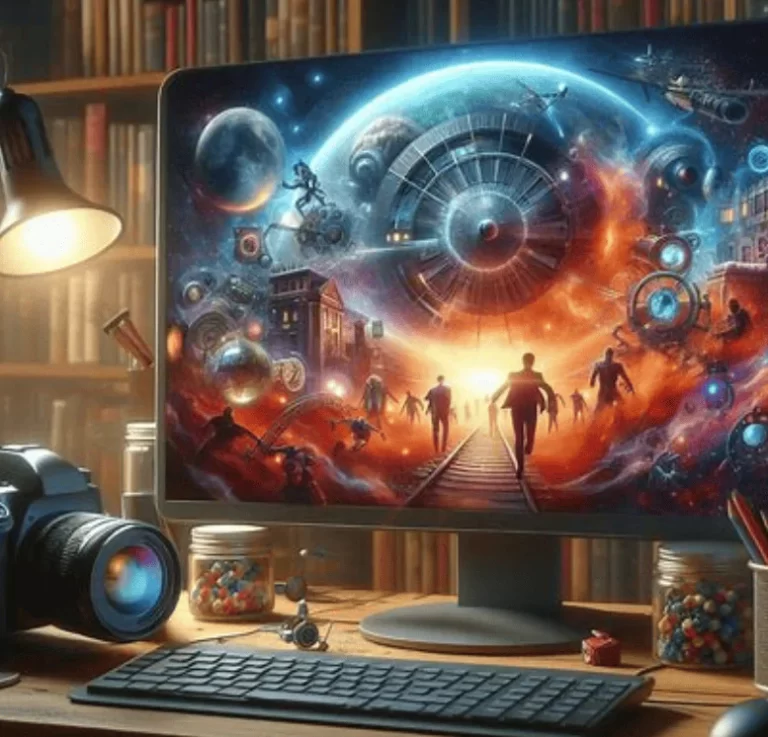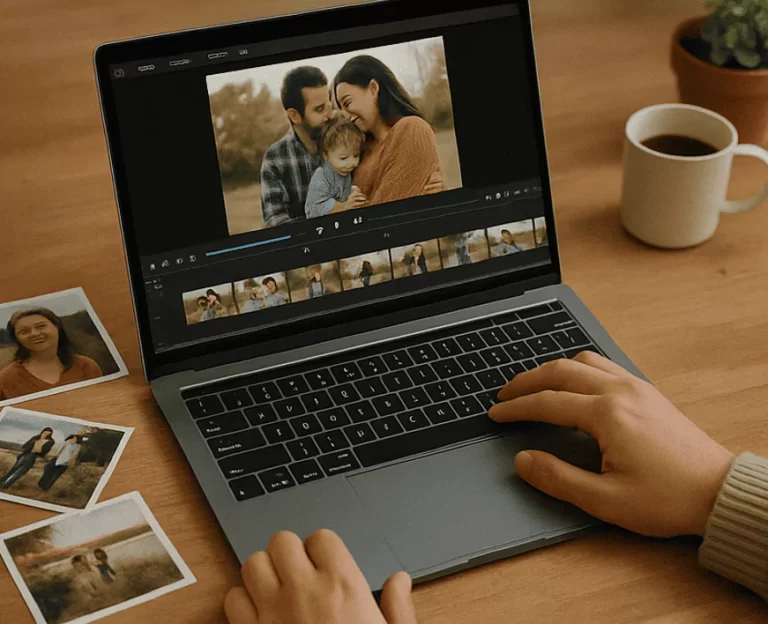
Digital Art Movement Art has always been a mirror of human creativity, evolving with societal shifts and technological advancements. From the intricate cave paintings of early civilizations to the bold abstractions of modernism, art captures the zeitgeist of its time. Today, we find ourselves in the midst of a seismic cultural shift defined by technology, connectivity, and limitless creative potential. At the forefront of this transformation is the Digital Art Movement, a revolutionary force that is redefining the boundaries of artistic expression and challenging long-standing conventions.
The Genesis of the Digital Art Movement
The origins of the Digital Art Movement can be traced back to the late 20th century, a time when personal computers and digital tools began to enter mainstream consciousness. Early pioneers, armed with rudimentary software and boundless ambition, explored this uncharted territory, transforming pixels into works of profound beauty and significance.
Early Experiments
Artists like Frieder Nake and Vera Molnár were among the first to experiment with computer-generated art in the 1960s and 1970s. Their work laid the groundwork for what would eventually become the Digital Art Movement, blending algorithmic precision with human creativity.
The Role of Technology
The technological boom of the 1990s and early 2000s provided artists with advanced tools like Photoshop and Illustrator, enabling them to create intricate and vibrant works that were unimaginable just decades prior.
Accessibility and Democratization
Perhaps the most significant aspect of the Digital Art Movement is its accessibility. With the proliferation of smartphones, tablets, and affordable creative software, anyone with an idea and a device can contribute to this burgeoning art form.
The Hallmarks of Digital Art
The Digital Art Movement is characterized by several defining features that distinguish it from traditional forms of artistic expression.
Infinite Iteration
Unlike traditional mediums, digital art allows for endless revisions. Artists can experiment freely, undo mistakes, and refine their work with unparalleled precision.
Fusion of Media
Digital art often combines elements of photography, painting, sculpture, and even sound. This interdisciplinary approach blurs the lines between different art forms, creating a holistic and immersive experience.
Interactivity
One of the most groundbreaking aspects of the Digital Art Movement is the potential for interactivity. Virtual reality (VR), augmented reality (AR), and motion-sensitive installations invite viewers to become active participants in the artistic process.
Breaking Traditional Norms
The Digital Art Movement is not just about innovation; it’s about challenging the very foundations of what art can and should be.
Reimagining Authenticity
The rise of digital tools has reignited debates about originality and authenticity in art. Critics argue that the absence of a tangible “original” diminishes the value of digital creations. However, proponents counter that the medium’s reproducibility democratizes art, making it accessible to a wider audience.
Redefining Ownership
Blockchain technology and Non-Fungible Tokens (NFTs) have upended traditional notions of art ownership. Digital artists now have the means to authenticate their work, ensuring provenance and enabling direct sales to collectors without intermediaries.
Challenging Aesthetics
Digital art challenges conventional aesthetics, embracing glitch effects, surreal distortions, and hyperrealism. These styles reflect the digital age’s complexity, celebrating imperfections and pushing the boundaries of visual storytelling.
The Role of AI in the Digital Art Movement
Artificial Intelligence (AI) has become a significant force within the Digital Art Movement, acting as both a tool and a collaborator.
Machine Learning and Creativity
AI-powered tools like DeepDream and DALL·E allow artists to generate stunning visuals based on textual descriptions. These programs analyze vast datasets to create works that are simultaneously innovative and unpredictable.
Ethical Considerations
The use of AI in art raises profound ethical questions. Who owns the rights to an AI-generated piece? Can a machine truly “create,” or is it merely executing a set of programmed instructions? These debates are central to the evolution of the Digital Art Movement.
Social Media and the Digital Art Revolution
The Digital Art Movement owes much of its momentum to social media platforms, which serve as virtual galleries and creative hubs.
Instagram as a Canvas
Platforms like Instagram have become indispensable tools for digital artists, offering exposure to millions of viewers worldwide. Through hashtags and algorithms, artists can connect with like-minded individuals and potential collectors.
Collaborative Communities
Online communities such as Behance and DeviantArt foster collaboration and mentorship, creating a supportive ecosystem where artists can share techniques, receive feedback, and find inspiration.
The Emergence of Immersive Art
Immersive experiences are at the heart of the Digital Art Movement, transforming how audiences engage with creativity.
Virtual Reality
VR art transcends the physical boundaries of traditional galleries, allowing viewers to step inside fully realized digital worlds. This medium offers limitless possibilities for storytelling and exploration.
Projection Mapping
Projection mapping transforms ordinary surfaces into dynamic canvases, merging architecture and digital imagery to create awe-inspiring spectacles.
Mixed Reality
Mixed reality combines physical and digital elements, offering a seamless integration of the two. This technology is being used in everything from interactive installations to commercial advertisements, exemplifying the versatility of the Digital Art Movement.
The Challenges of Digital Art
Despite its potential, the Digital Art Movement faces significant challenges that must be addressed for its continued growth.
Preservation and Longevity
Unlike traditional art, which can endure for centuries, digital works are vulnerable to technological obsolescence. Ensuring their longevity requires robust archiving methods and ongoing updates to software and hardware.
Environmental Impact
The energy-intensive processes behind blockchain technology and NFTs have sparked concerns about the environmental footprint of digital art. As the movement grows, finding sustainable solutions will be critical.
Navigating Commercialization
The commercial success of digital art, particularly through NFTs, has led to debates about the commodification of creativity. Striking a balance between artistic integrity and financial viability remains a delicate task.
The Future of the Digital Art Movement
The Digital Art Movement is still in its infancy, with endless possibilities on the horizon. Emerging technologies and evolving societal values will shape its trajectory in profound and unpredictable ways.
Quantum Computing and Creativity
Quantum computing promises to revolutionize digital art by enabling the processing of complex data in real-time. Artists will have unprecedented tools to create works that are both intricate and immersive.
Integration with Everyday Life
As digital art becomes more integrated into our daily lives, it will influence everything from urban design to personal devices. Art will no longer be confined to galleries; it will become an omnipresent part of the human experience.
Ethical and Inclusive Art
The future of the Digital Art Movement will likely emphasize ethical considerations, prioritizing inclusivity, sustainability, and social impact. Artists will continue to use their platforms to address global issues, from climate change to social justice.
Conclusion
The Digital Art Movement is a testament to humanity’s boundless ingenuity and adaptability. By pushing boundaries and breaking rules, it challenges traditional paradigms and opens new avenues for creative expression. As technology continues to evolve, so too will this dynamic and transformative art form, leaving an indelible mark on culture and society. In embracing the digital frontier, we celebrate not just innovation but the enduring spirit of artistic exploration.



